The viral trend known as the Dr Wendy Suzuki Pink Salt trick has taken over TikTok, YouTube, and Reddit. Videos claim this simple drink of warm water and Himalayan pink salt can melt belly fat, boost brain function, and detox the body. Some even insist that Dr Wendy Suzuki herself recommended it. But is any of that real?
In this guide, we uncover the truth about the Dr Wendy Suzuki Pink Salt phenomenon. You’ll learn how her name became linked to the pink salt trick, what the actual science says about pink salt water, and why experts warn against believing quick-fix detox fads. By the end, you’ll know how to protect your health with evidence-based habits instead of viral myths.
Table of Contents
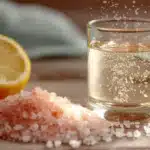
Dr Wendy Suzuki Pink Salt: Shocking Myths Exposed and Proven Facts
- Total Time: 3 minutes
- Yield: 1 serving 1x
Description
A viral pink salt detox drink falsely linked to Dr. Wendy Suzuki. Made with lemon, Himalayan salt, and warm water — but use with caution.
Ingredients
½ tsp Himalayan pink salt
1 tbsp lemon juice
1 cup warm water
(Optional) pinch baking soda or 1 tsp honey
Instructions
1. Mix pink salt and lemon juice in a glass.
2. Add warm water and stir thoroughly.
3. Optionally add honey or baking soda.
4. Drink slowly on an empty stomach if desired.
5. Monitor your body’s reaction.
Notes
This drink has no proven health benefits. Consult a doctor before regular use.
- Prep Time: 3 minutes
- Cook Time: 0 minutes
- Category: Drinks
- Method: Mixing
- Cuisine: Viral Trend
Nutrition
- Serving Size: 1 glass
- Calories: 5
- Sugar: 0g
- Sodium: 1180mg
- Fat: 0g
- Saturated Fat: 0g
- Unsaturated Fat: 0g
- Trans Fat: 0g
- Carbohydrates: 2g
- Fiber: 0g
- Protein: 0g
- Cholesterol: 0mg
Understanding the Dr Wendy Suzuki Pink Salt Trend
What Is the Pink Salt Trick Everyone’s Talking About?
The pink salt trick is a viral trend claiming that mixing Himalayan pink salt with warm water can detox your body, burn fat, and boost energy. Some versions include lemon juice, baking soda, or honey for extra “detox” power. The recipe is simple: half a teaspoon of pink salt in one cup of warm water, often taken on an empty stomach in the morning.
The idea sounds appealing. It’s quick, cheap, and natural. But the problem is that there’s no solid scientific evidence that pink salt water does any of those things. In reality, it’s just salt water with trace minerals like potassium and magnesium, not a miracle drink.
Why Is Dr Wendy Suzuki’s Name Associated With It?
Dr Wendy Suzuki, a respected neuroscientist at New York University, became accidentally linked to the pink salt trick through viral misinformation. Some videos online used her image and voice clips out of context, implying that she endorsed pink salt for brain health or weight loss. She never made such a claim.
Her real research focuses on how physical exercise, meditation, and breathing improve brain function and mood, not on detox drinks or fad diets. Unfortunately, social media algorithms spread the false connection quickly, and many viewers believed it.
How the Misinformation Spread Across Social Media
This trend exploded because it checked all the boxes for virality: an easy home remedy, a popular ingredient, and a recognizable expert name. Platforms like TikTok, Instagram, and Reddit amplified the posts, rewarding sensational headlines such as “Scientist Reveals Pink Salt Trick to Melt Fat.”
People love simple solutions. The promise of effortless results is irresistible, especially when paired with “scientific authority.” But once the videos gained traction, they took on a life of their own. Within weeks, the pink salt trick had millions of views, with little to no fact-checking in sight.
The result? A mix of half-truths, fake endorsements, and risky health advice circulating faster than reliable information ever could.
Who Is Dr Wendy Suzuki and What Does She Really Promote?

Dr Wendy Suzuki’s Background and Research Focus
Before diving further into the pink salt controversy, it helps to understand who Dr Wendy Suzuki truly is. She is a highly respected neuroscientist and professor at New York University, best known for her groundbreaking research on how movement, exercise, and mindfulness affect the brain. Her work has helped millions understand that mental well-being is built through daily habits, not quick fixes.
Dr Suzuki’s studies focus on how aerobic exercise improves memory, focus, and emotional balance. Her best-selling book Good Anxiety highlights how we can turn stress into strength by managing emotions and strengthening the mind-body connection. She has appeared in numerous TED Talks, sharing evidence-based insights on how lifestyle habits reshape the brain.
In short, her message is about empowerment through science, not shortcuts through salt water or viral trends.
Her Real Work on Brain Health, Exercise, and Emotional Well-being
Dr Wendy Suzuki’s research centers around the brain’s remarkable ability to adapt and grow. She teaches that even moderate exercise increases the production of brain-derived neurotrophic factor (BDNF), a protein that supports learning and memory. Regular movement literally helps your brain stay younger and sharper.
She also advocates for meditation and mindful breathing, explaining that these practices calm the amygdala—the brain’s emotional center—and improve focus. In her interviews and lectures, she often emphasizes three core pillars of brain health: movement, mindfulness, and meaningful connection.
What’s missing from that list? Pink salt. She has never promoted salt water drinks or detox hacks as part of her scientific recommendations.
Why She Never Recommended the Pink Salt Trick
So, where did the false connection begin? It appears that social media creators edited snippets of Dr Suzuki’s talks about energy and mental focus, then paired them with unrelated footage of pink salt recipes. These misleading edits spread widely, making it appear as if she endorsed the trend.
In reality, Dr Suzuki has never mentioned the pink salt trick in her research, books, or interviews. Fact-checking reports confirm that the association between her and this viral salt drink is entirely fabricated.
Dr Suzuki’s actual advice is the opposite of such fads. She encourages building consistent habits like daily walking, balanced nutrition, good sleep, and mindfulness. These methods, backed by decades of neuroscience, deliver the kind of results that no “miracle salt drink” can.
Her credibility rests on years of scientific evidence, not internet trends. The use of her name in pink salt videos isn’t just inaccurate—it undermines real science and misleads the public.
What Is the Pink Salt Trick Recipe?
The Popular Four-Ingredient Version Explained
The so-called pink salt trick recipe has taken social media by storm. It’s often described as a “simple detox drink” made from just a few household ingredients. The most common version includes half a teaspoon of Himalayan pink salt mixed into one cup of warm water, sometimes with added lemon juice, baking soda, or honey.
The claim is that this mix detoxifies the body, boosts metabolism, and helps with digestion. Some people even believe it balances hormones and reduces bloating. Videos showcasing this “miracle drink” promise fast results within days, often showing before-and-after images that appear convincing but lack any medical basis.
Himalayan pink salt, known for its light rosy hue, is indeed natural and contains trace minerals like magnesium, potassium, and calcium. But these minerals exist in tiny amounts—far too small to make any real difference in metabolism or fat burning.
How the Recipe Became a Weight Loss Trend
The pink salt trick didn’t gain popularity overnight. It started in online wellness communities and grew rapidly on TikTok and YouTube. Influencers began posting short clips labeled “morning detox water” or “salt trick for flat belly.” Many videos used titles such as “Dr Wendy Suzuki’s pink salt method,” even though she never mentioned it.
This pattern is common in viral wellness trends: a mix of pseudoscience, visual appeal, and borrowed authority from experts who have nothing to do with the claim. People who saw others “try it and swear by it” felt tempted to do the same. Soon, the recipe spread to Reddit forums and Pinterest boards, sparking thousands of discussions.
The pink salt drink gained extra momentum during the pandemic, when many were looking for easy at-home remedies for health, weight loss, and immunity. The formula seemed simple enough to trust, which only fueled its reach.
Variations of the Recipe Circulating on TikTok, Reddit, and YouTube
While the core ingredients stay similar, dozens of variations of the pink salt trick exist online. Some add apple cider vinegar or cayenne pepper to “increase fat burn.” Others recommend drinking it on an empty stomach before breakfast or just before bed.
Here are a few of the most common versions discussed across platforms:
| Version Name | Ingredients | Claimed Benefit |
|---|---|---|
| Basic Pink Salt Drink | ½ tsp pink salt + 1 cup warm water | Hydration and digestion |
| Lemon Salt Detox | Pink salt + lemon juice + warm water | Bloating and “detox” |
| Baking Soda Blend | Pink salt + baking soda + lemon | Alkalizing the body |
| Oprah Version (false claim) | Pink salt + apple cider vinegar + cayenne + lemon | Metabolism boost |
| Reddit Variation | Pink salt + honey + water | Fat-burning and energy |
Despite the appealing names, these recipes share one issue: none are scientifically supported. The body’s detox process happens naturally through the liver and kidneys. Drinking salted water doesn’t enhance it—it can even stress your system if consumed daily.
Some users online report mild benefits such as feeling more hydrated or less bloated. In most cases, these effects come from drinking more water in general, not from the pink salt itself.
The Science Behind Himalayan Pink Salt
What Makes Pink Salt Different From Regular Salt
To understand the truth about the Dr Wendy Suzuki Pink Salt trend, we need to look at what Himalayan pink salt really is. This salt comes from ancient sea deposits in Pakistan’s Khewra mines and gets its pink color from trace minerals like magnesium, potassium, and calcium. Many people believe these minerals make pink salt far healthier than regular table salt, but the difference is mostly aesthetic.
Chemically, pink salt and table salt are nearly identical, both containing about 98 percent sodium chloride. The remaining two percent in pink salt adds trace minerals, but in amounts too tiny to impact your health or metabolism. Claims that Dr Wendy Suzuki Pink Salt can “activate metabolism” or “detoxify” the body ignore the fact that your kidneys and liver already perform those roles naturally and effectively.
Nutritional Composition and Mineral Content
Here’s how Himalayan pink salt compares nutritionally to regular table salt per 100 grams:
| Type of Salt | Sodium (mg) | Potassium (mg) | Magnesium (mg) | Calcium (mg) |
|---|---|---|---|---|
| Himalayan Pink Salt | 36,000 | 100 | 20 | 60 |
| Table Salt | 38,000 | 8 | 1 | 3 |
As the table shows, while pink salt offers slightly more minerals, the difference is not enough to make a meaningful health impact. You’d need to consume dangerously high amounts to see measurable effects, which would lead to excess sodium intake—a serious health concern.
Experts agree that the appeal of the Dr Wendy Suzuki Pink Salt trend comes more from marketing than from real nutrition. Its mineral trace content is scientifically interesting but practically insignificant.
Myths About Detoxification and Fat-Burning Properties
One of the biggest myths driving the Dr Wendy Suzuki Pink Salt craze is the claim that it detoxifies your body or burns fat. In truth, no form of salt can “flush toxins” from the body. The organs responsible for detoxification are your liver and kidneys, not pink salt water.
The belief that salt water burns fat is also unsupported by science. Some people might experience minor water loss after drinking salty mixtures, but that’s dehydration, not fat loss. In fact, too much sodium can lead to bloating and fluid retention—the exact opposite of what most people want.
If you’ve seen influencers promise that this “pink salt water detox” clears your skin, melts fat, or resets hormones, remember that these claims lack any peer-reviewed evidence. They work on emotions, not science.
The Real Benefits of Pink Salt
This doesn’t mean pink salt is useless. It can be a flavorful, visually appealing ingredient for cooking when used moderately. Some people enjoy it for its coarse texture or subtle mineral flavor. It’s also popular for decorative lamps and spa treatments, although the health benefits of those uses are mostly anecdotal.
So while Himalayan pink salt can make your dishes prettier, it won’t make you healthier. The Dr Wendy Suzuki Pink Salt trend exaggerates its properties and misuses scientific credibility to sell an illusion of quick results.
Health Claims vs. Scientific Evidence
What People Believe About the Pink Salt Trick
The Dr Wendy Suzuki Pink Salt trend has exploded across TikTok and Reddit, largely fueled by dramatic claims and emotional storytelling. Followers insist that a simple mix of warm water and Himalayan pink salt can burn fat, balance hormones, and clear the mind. Some posts even suggest that Dr Wendy Suzuki endorses it as a way to enhance brain performance.
People online claim benefits such as:
- Faster metabolism
- Reduced bloating
- Improved digestion
- Natural detoxification
- Better hydration
- Stress relief and focus boost
Each of these promises sounds impressive, but there’s one issue: none of them are backed by real science.
The Dr Wendy Suzuki Pink Salt drink doesn’t contain any active compounds that burn fat or flush toxins. While pink salt does have trace minerals, they exist in too small amounts to make a measurable difference. The supposed “results” many people share online are more likely from drinking more water or cutting back on processed food rather than the salt itself.
What Medical Experts and Nutritionists Actually Say
Nutrition experts and registered dietitians agree that Himalayan pink salt is not a miracle ingredient. According to multiple scientific reviews, there is no evidence that pink salt improves metabolism, aids detoxification, or enhances brain function.
Dr Wendy Suzuki herself has never connected pink salt to any of her neuroscience findings. Her proven advice centers around physical activity, mindful breathing, and nutrition rich in fruits, vegetables, and whole foods—not salt water.
Medical professionals warn that drinking pink salt water every morning may even cause more harm than good. Too much sodium can lead to dehydration, increase blood pressure, and strain the kidneys. People with heart disease, thyroid disorders, or hypertension should be especially cautious about sodium-based “detox” drinks.
Several fact-checking organizations, including PhillyVoice and Healthline, have confirmed that the Dr Wendy Suzuki Pink Salt trend has no credible research behind it. These outlets emphasize that any perceived benefit is likely psychological, not physiological.
Real Effects on Hydration, Digestion, and Metabolism
Let’s take a closer look at what actually happens when you drink pink salt water. Sodium does play an important role in hydration, but only when balanced with potassium and other electrolytes. Drinking too much salted water disrupts this balance, causing your body to hold on to fluid instead of releasing it. The result can be temporary bloating and fatigue rather than improved hydration.
As for digestion, warm water itself may help stimulate bowel movements, which is why some people feel “lighter” after drinking it. However, that benefit comes from the water temperature, not from pink salt. There’s no proven mechanism showing that pink salt boosts metabolism or burns calories.
When it comes to brain performance, Dr Wendy Suzuki’s real research points to movement and exercise as the key drivers of mental energy. The Dr Wendy Suzuki Pink Salt drink does not replicate those effects and has never been part of her recommendations.
In summary, pink salt water may offer a placebo sense of well-being but not measurable scientific benefits. The best strategy for hydration and health remains simple: balanced electrolytes, whole foods, and consistent movement.
Risks and Side Effects of Drinking Pink Salt Water
Who Should Avoid the Pink Salt Trick
The Dr Wendy Suzuki Pink Salt trend might appear harmless at first glance, but regular consumption can create hidden health problems. Drinking salt water every day is not a gentle detox—it’s a sodium overload waiting to happen.
People with any of the following conditions should avoid the pink salt trick entirely:
- High blood pressure
- Kidney disease or reduced kidney function
- Thyroid disorders
- Heart disease or edema
- Pregnancy or breastfeeding
For these groups, added sodium can strain organs, increase water retention, and raise blood pressure. Even healthy individuals may experience discomfort if they drink too much pink salt water on an empty stomach.
Common Side Effects of Excess Sodium Intake
Himalayan pink salt may look pretty and sound healthy, but its sodium content is nearly identical to regular salt. Over time, consuming too much sodium—even from “natural” sources—can lead to several issues.
Here are some of the most reported side effects among people trying the Dr Wendy Suzuki Pink Salt drink:
| Side Effect | Description | Possible Consequence |
|---|---|---|
| Dehydration | Excess sodium pulls water out of cells | Fatigue, dry mouth, dizziness |
| Bloating | Water retention from sodium imbalance | Puffy face or swollen hands |
| Digestive distress | Irritation in the stomach or intestines | Nausea, cramps, diarrhea |
| High blood pressure | Increased fluid in blood vessels | Greater strain on heart and kidneys |
| Electrolyte imbalance | Disruption of sodium-potassium ratio | Muscle weakness or confusion |
Medical experts emphasize that even small increases in daily sodium can affect cardiovascular health over time. The Dr Wendy Suzuki Pink Salt drink, when taken regularly, risks pushing your sodium intake above the recommended limit of 2,300 mg per day set by the American Heart Association.
Safe Sodium Limits and Healthy Alternatives
It’s important to remember that sodium is not the enemy—it’s essential for nerve function and hydration when consumed in moderation. The problem arises when people follow viral advice that encourages excessive or concentrated salt intake.
If you want to maintain proper electrolyte balance, you can use alternatives that are safer and scientifically supported:
- Drink water throughout the day rather than all at once.
- Add a squeeze of lemon or cucumber slices for natural flavor.
- Choose balanced electrolyte mixes that contain sodium, potassium, and magnesium in safe proportions.
- Eat whole foods rich in natural electrolytes such as bananas, avocados, and spinach.
Dr Wendy Suzuki’s real advice centers on lifestyle, not fads. Exercise, mindful breathing, and balanced nutrition offer sustainable results for energy and mental clarity—without the risks tied to the Dr Wendy Suzuki Pink Salt drink.
If you like the taste of Himalayan pink salt, enjoy it as a seasoning, not as a supplement. Use it on cooked vegetables, eggs, or lean meats. That’s where it belongs—in your food, not your water bottle.
Why the Pink Salt Trend Went Viral
The Psychology Behind Quick-Fix Health Hacks
One major reason the Dr Wendy Suzuki Pink Salt trend became a global sensation is simple human psychology. People love shortcuts. The promise that a small, inexpensive ritual could flatten your belly, clear your mind, and energize your day feels irresistible. It offers control and hope without demanding hard work.
Health influencers understand this appeal. They frame the pink salt trick as “easy science,” pairing the natural beauty of Himalayan salt with words like “detox,” “reset,” and “miracle.” These phrases evoke trust and curiosity, especially when combined with supposed scientific credibility through names like Dr Wendy Suzuki.
The human brain is wired to seek patterns and quick results. When a trend looks simple, people assume it must work. The comfort of “natural” ingredients adds another layer of false security, reinforcing the idea that if it comes from nature, it must be safe. But in the case of the Dr Wendy Suzuki Pink Salt trick, nature is being used as a marketing tool, not a health solution.
How Social Media Algorithms Amplified the Trend
Social media platforms like TikTok, Instagram, and YouTube prioritize engagement over accuracy. Posts that spark curiosity or emotion rise to the top, regardless of whether the information is true. The Dr Wendy Suzuki Pink Salt videos thrived because they combined stunning visuals with attention-grabbing headlines such as “Scientist Reveals the Secret Fat-Burning Drink.”
Algorithms reward watch time, likes, and shares. Once people interacted with a few posts about pink salt, the system kept showing them more. As content repetition increased, users began believing it must be legitimate simply because it kept appearing. This is known as the “illusion of truth effect.”
Creators added more fuel by using deepfake voiceovers and AI-generated captions that mimicked Dr Wendy Suzuki’s voice or likeness, giving the misinformation a false sense of authority. Viewers assumed these clips were real interviews or official advice, even though no such content exists in Dr Suzuki’s verified materials.
The Role of Fake Celebrity Endorsements and AI Voiceovers
Fake endorsements gave the pink salt trick viral power. The moment viewers saw a well-known figure like Oprah or Dr Wendy Suzuki seemingly supporting a product, credibility skyrocketed. In reality, these videos were often stitched together using random audio from interviews unrelated to salt or diet.
AI tools made it easier for creators to generate realistic-sounding voices and overlay them on health videos. Combined with emotional testimonials and before-and-after photos, these clips created a persuasive illusion. They spread rapidly before platforms could moderate or flag them.
The result is a digital echo chamber where a false claim is repeated until it sounds factual. Even people with good intentions unknowingly share these posts, reinforcing the cycle.
Why People Continue to Believe the Trend
Belief in the Dr Wendy Suzuki Pink Salt trick continues because it aligns with the desire for simple solutions in a complicated health landscape. Misinformation thrives when it offers comfort, community, and hope. Comment sections fill with positive stories, even if those experiences are coincidental or placebo-driven.
Psychologists note that confirmation bias also plays a major role. Once someone believes the pink salt drink works, they notice only the posts that support that belief. Contradictory information, such as medical warnings, is ignored or dismissed as “negativity.”
Ultimately, the Dr Wendy Suzuki Pink Salt trend succeeded not because of science but because of storytelling. It turned ordinary salt water into a symbol of transformation, making it the perfect recipe for viral success.
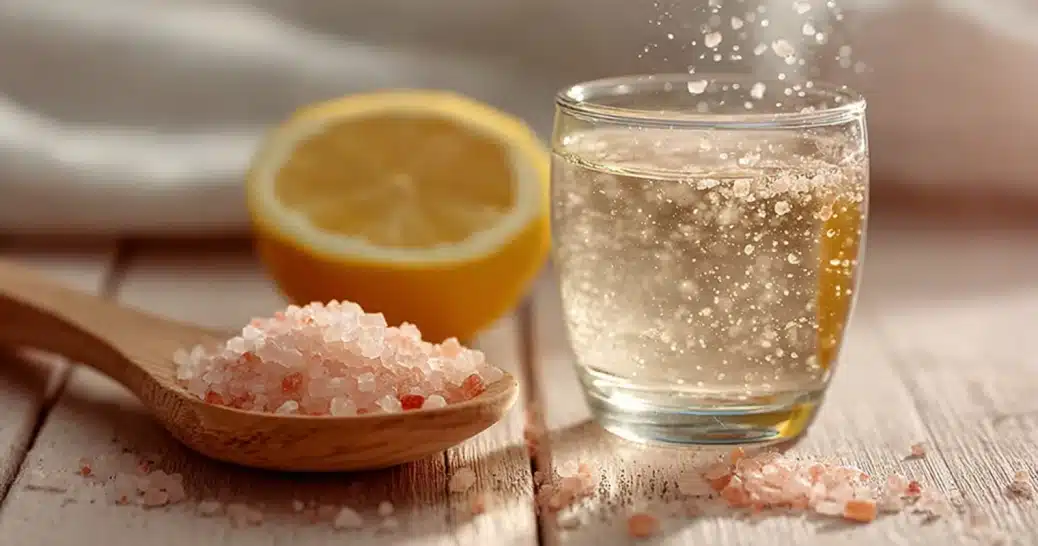
Healthy Alternatives Recommended by Experts
Safe Hydration Practices Without Added Salt
After understanding the risks behind the Dr Wendy Suzuki Pink Salt trend, the next question is what to do instead. The good news is that staying hydrated and supporting metabolism doesn’t require any extreme or trendy drink.
Experts agree that the best way to hydrate your body is with clean, plain water. You can flavor it naturally with lemon slices, cucumber, mint, or a few berries to make it more refreshing. If you exercise regularly or live in a hot climate, electrolyte drinks are a safer option than pink salt water. Look for ones that contain balanced ratios of sodium, potassium, and magnesium rather than heavy doses of salt alone.
Some people turn to herbal teas like ginger or peppermint for digestive support. These offer mild anti-inflammatory benefits without the sodium risks of pink salt water. What matters most is consistency—drinking enough fluids throughout the day, not relying on one “magic drink” to do all the work.
Proven Habits for Brain and Body Health According to Dr Wendy Suzuki
Dr Wendy Suzuki’s real teachings focus on daily habits that strengthen both mind and body. Her research shows that even 10 minutes of physical activity a day can significantly boost focus, mood, and memory. Movement triggers the release of brain chemicals such as dopamine and serotonin, which help you feel happier and more alert.
Mindful breathing and meditation also form part of her evidence-based advice. These simple practices reduce anxiety by calming the brain’s emotional centers and improving clarity. In contrast, the Dr Wendy Suzuki Pink Salt drink offers no proven impact on brain function or energy.
Dr Suzuki encourages people to treat health as a lifestyle, not a quick challenge. Regular exercise, balanced nutrition, and quality sleep are the true brain boosters. They don’t promise overnight transformations, but they deliver real, lasting results backed by science.
How to Use Himalayan Pink Salt Safely in Food Instead of Drinks
While pink salt shouldn’t be consumed as a concentrated drink, it’s perfectly fine when used in cooking. Its mineral-rich flavor adds depth to dishes, and the soft pink hue makes it a favorite for presentation. You can use Himalayan pink salt safely in several ways:
- Sprinkle it lightly on roasted vegetables, eggs, or salads.
- Mix it with olive oil for a simple, flavorful seasoning blend.
- Use it to rim glasses for mocktails or healthy smoothies.
- Create a DIY exfoliating body scrub by mixing pink salt with coconut oil.
When used moderately, pink salt enhances your meals without endangering your sodium balance. Just remember, it should complement your food, not dominate your diet.
The Dr Wendy Suzuki Pink Salt trend may have sold the idea of a “miracle tonic,” but the real power lies in sustainable habits—hydration, movement, mindfulness, and moderation. These approaches improve your body’s function naturally, without any risky shortcuts.
Reviewing Real-Life Testimonials and Expert Opinions
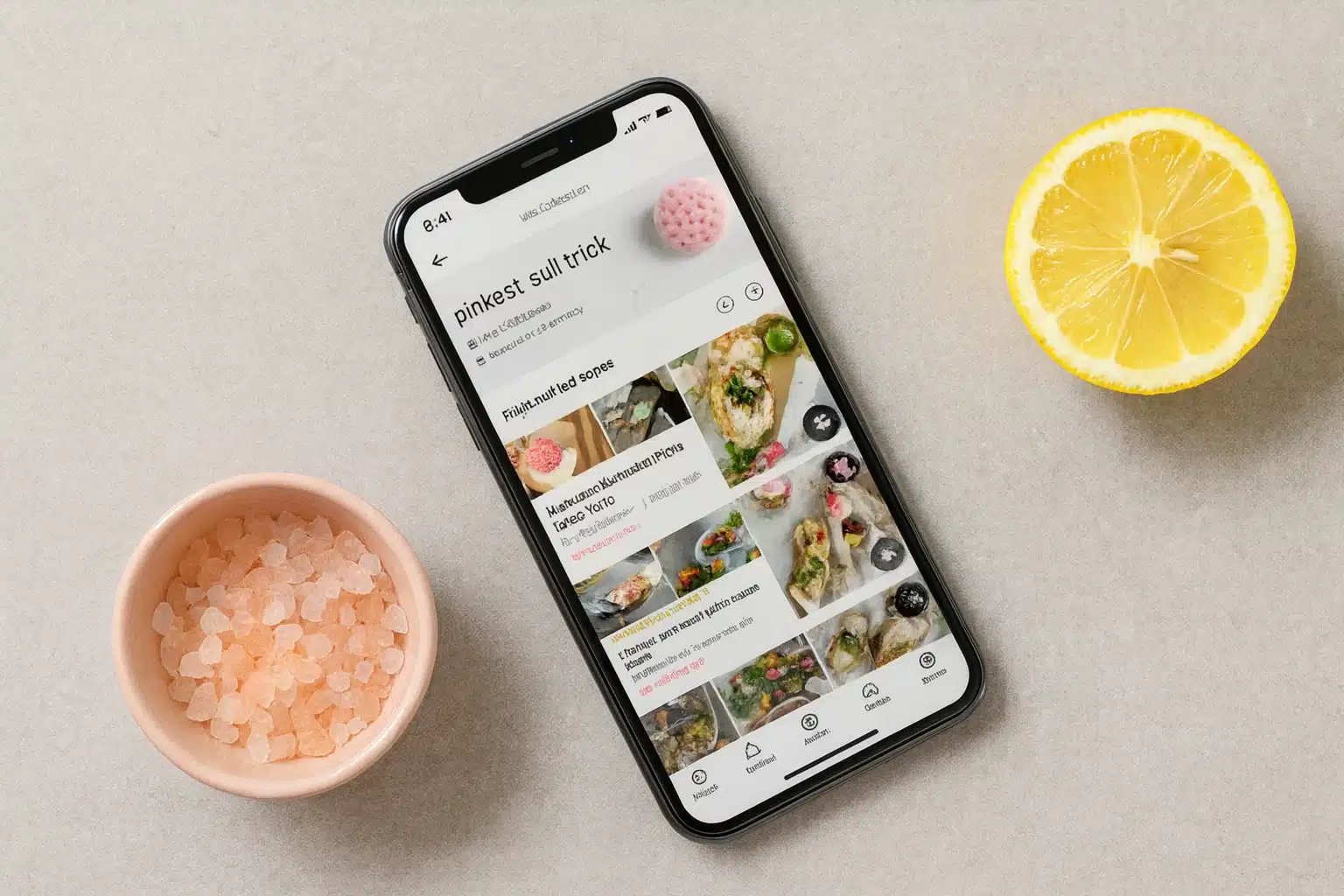
What People Are Saying Online About the Pink Salt Trick
When the Dr Wendy Suzuki Pink Salt drink went viral, thousands of users rushed to social media to share their experiences. Platforms like TikTok, Reddit, and YouTube became filled with before-and-after clips and personal reviews claiming quick results. Many said they felt lighter, more energized, or less bloated after drinking the pink salt mix each morning.
However, most of these testimonials are anecdotal. Very few include long-term results, medical supervision, or scientific evidence. Many people trying the Dr Wendy Suzuki Pink Salt trick may have also started other new habits at the same time, such as reducing sugar or drinking more water. These lifestyle changes—not the salt—are usually responsible for their short-term improvements.
Some users even reported discomfort. Common complaints included bloating, nausea, or dizziness after several days of trying the drink. Others mentioned that the taste was unpleasant and that it made them feel dehydrated instead of refreshed.
This pattern highlights a common issue with viral health hacks: individual results vary widely, and online testimonials can easily exaggerate the benefits while ignoring the risks.
Why Results Often Come From Placebo or Lifestyle Changes
The placebo effect is powerful. When people expect a health improvement, their minds and bodies can temporarily respond as if they’ve achieved one. The Dr Wendy Suzuki Pink Salt trend thrives on that expectation. Those who believe the drink “works” often notice subtle positive sensations simply because they anticipate them.
In many cases, participants in these online challenges also pay more attention to hydration, diet, and exercise while testing the drink. These supportive behaviors create the illusion that pink salt water caused the improvement, when in reality, the body is responding to healthier habits overall.
Experts warn that relying on placebo-driven practices can be misleading. It prevents individuals from addressing real causes of fatigue, bloating, or poor digestion—issues that require professional advice and long-term lifestyle adjustments.
A Balanced Perspective: Taste Enhancer, Not a Miracle Cure
Himalayan pink salt is neither harmful when used properly nor the miracle ingredient that social media portrays. It’s a flavorful mineral salt that adds a unique taste and texture to food, but that’s where its benefits end.
The Dr Wendy Suzuki Pink Salt drink may look appealing on camera, but no credible studies support its claimed effects on metabolism, detoxification, or brain health. It’s crucial to distinguish between genuine nutrition science and marketing myths.
Dr Wendy Suzuki’s real message centers on empowering people through evidence-based habits—exercise, mindfulness, and balanced nutrition. Those are the real tools for improving energy, focus, and well-being. Pink salt, at best, belongs in your kitchen, not in your wellness routine.
Conclusion: The Truth About Dr Wendy Suzuki and the Pink Salt Hype
The Dr Wendy Suzuki Pink Salt trend is a textbook example of how misinformation spreads online. What began as a simple home remedy turned into a viral sensation through clickbait titles and false expert endorsements.
In reality, Dr Wendy Suzuki has never promoted pink salt for detox, fat burning, or brain enhancement. Her real science focuses on exercise, mindfulness, and lifestyle changes that strengthen both body and mind. Himalayan pink salt, while fine for cooking, is not a shortcut to better health.
If you’re serious about improving energy, focus, and well-being, follow methods backed by evidence—move daily, hydrate with balance, eat nutrient-dense foods, and get good sleep. Leave the pink salt trick where it belongs: in viral myth territory, not your morning routine.
Loved learning the truth about the Dr Wendy Suzuki Pink Salt trend? Let’s keep the conversation going!
Follow us on social media for more science-backed wellness insights, debunked viral myths, and healthy lifestyle tips.
👉 Follow us on Facebook for daily updates and real-time discussions
👉 Explore inspiring health boards and visual guides on Pinterest
Your support helps us spread evidence-based information and fight misinformation one post at a time.
FAQs
What is the pink salt trick?
The pink salt trick is a viral drink made by mixing Himalayan pink salt with warm water, sometimes with lemon or baking soda. It’s often claimed to burn fat, detox the body, and boost energy. However, there is no scientific proof supporting these benefits. The Dr Wendy Suzuki Pink Salt trend falsely links the neuroscientist to this recipe, even though she has never endorsed it.
What does putting pink salt under the tongue do?
Some online users claim that placing pink salt under the tongue can boost hydration and balance electrolytes. While the body does absorb trace minerals through saliva, the effect is minimal. The practice has no scientific validation, and experts caution that it could raise sodium intake unnecessarily.
What are the disadvantages of Himalayan pink salt?
Despite its natural appearance, pink salt is still salt. Overuse can lead to dehydration, high blood pressure, and kidney strain. The Dr Wendy Suzuki Pink Salt drink, if consumed daily, can easily exceed safe sodium limits. Moderation is key—pink salt should flavor your food, not serve as a health supplement.
Why do bodybuilders have pink salt?
Some athletes and bodybuilders use pink salt to replace electrolytes lost through sweat. However, they typically consume it as part of balanced hydration formulas, not as a detox drink. The Dr Wendy Suzuki Pink Salt trend takes this concept out of context, exaggerating its benefits for general users.

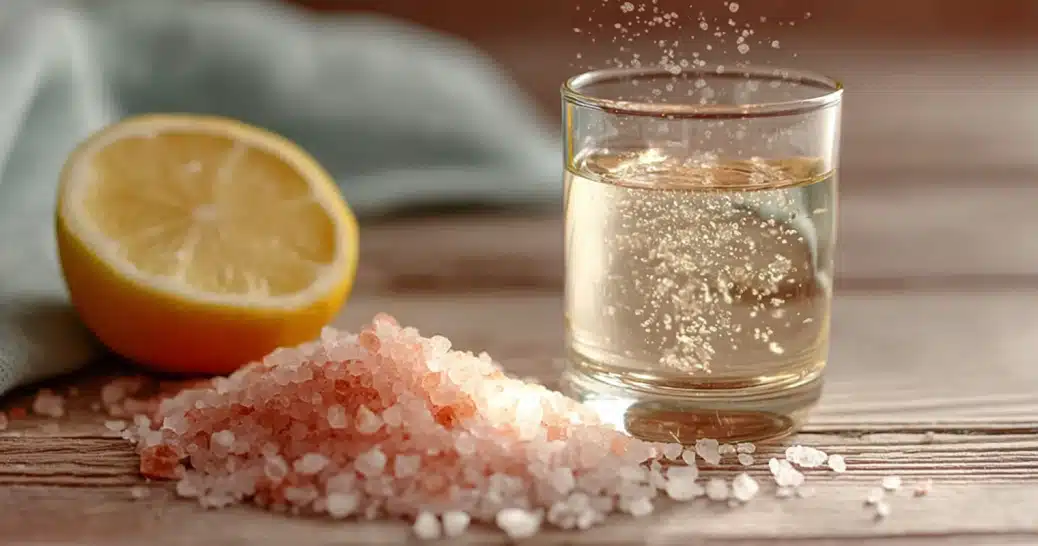
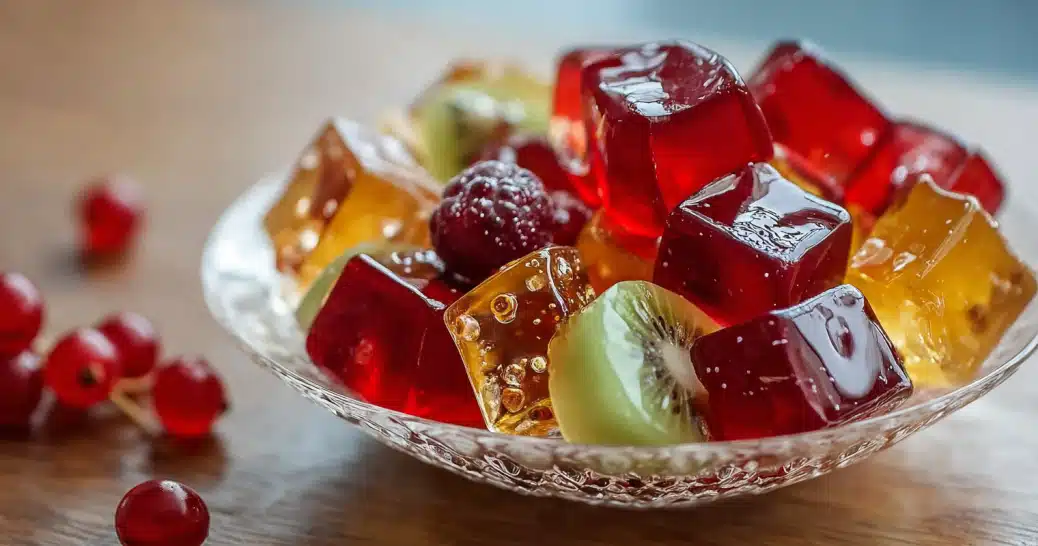
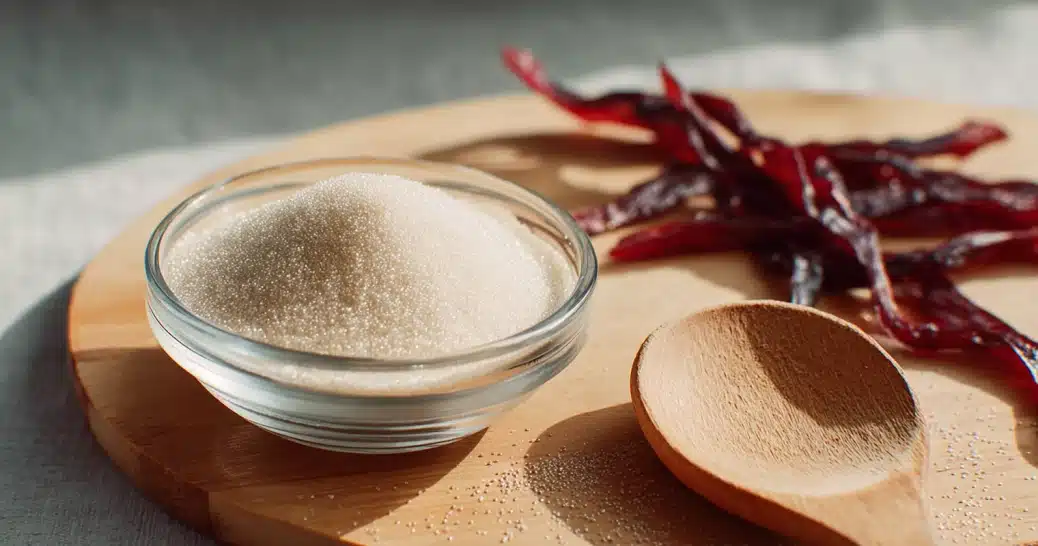
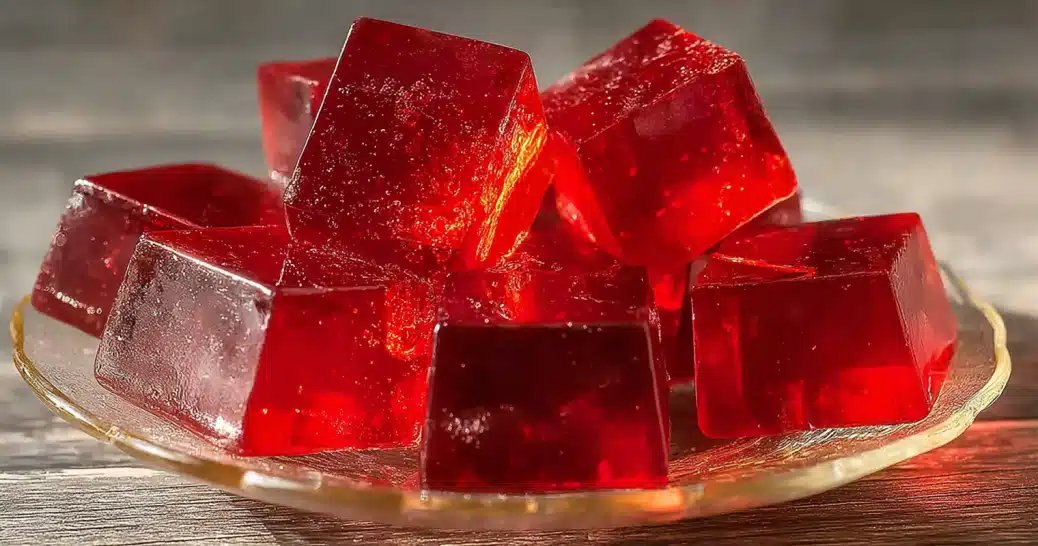


I was one such person sucked in to the Narrative that LipoVive was a fast weight loss solution, endorsed by Suzuki and singer Adele Adkins. I spent over $300 dollars AU on 6 bottles supposedly arriving this coming week.
I’m normally careful with scams, I could tell watching this hour-long video that it had to be fake. But the use of Dr Suzuki and Adele were so real and seemingly authentic, I was sucked in!…..now I have 6 Bottles of something unknown, will it be safe to take or chuck it in the bin!…$300 dollars down the drain!!
Hi Clint, thank you for taking the time to share your experience. It’s always best to be cautious with any new supplement or product, especially those promoted online.
I recommend checking with a pharmacist or healthcare professional before using anything you’re unsure about, they can confirm whether it’s safe for you.
I truly appreciate that you shared your story here. It’s a good reminder for all of us to verify information and stay careful with health products found online.